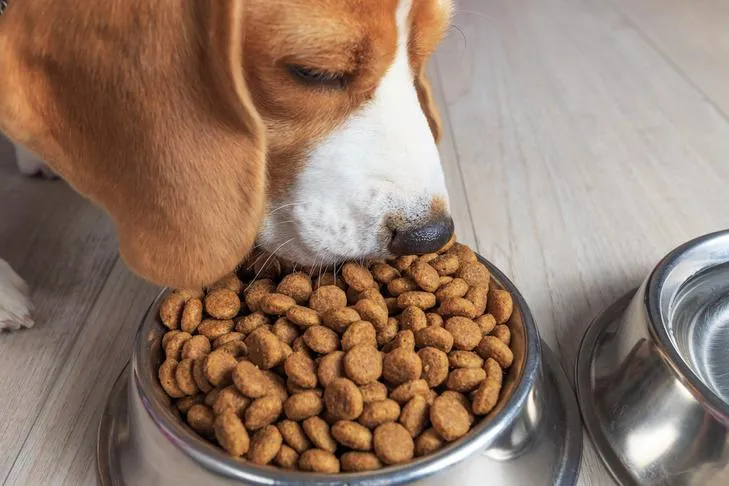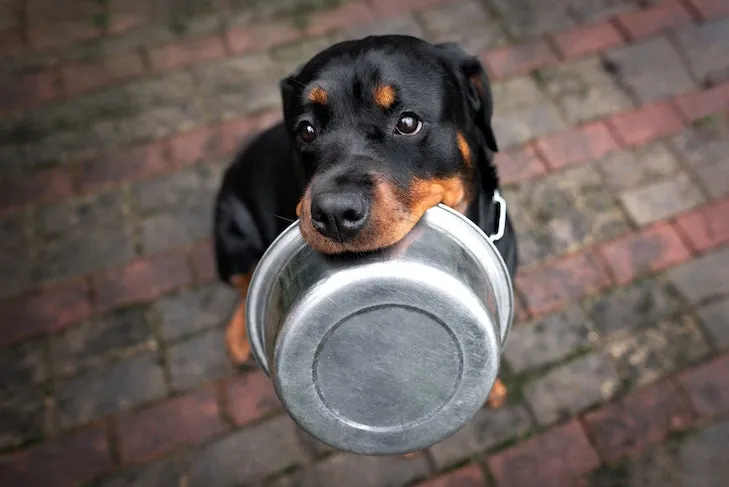Has your beloved canine companion suddenly turned up their nose at mealtime, or are they exhibiting a general disinterest in their food bowl? Many dog owners find themselves asking, “my dog is a picky eater, what should I do?” While it’s common for dogs to have preferences, a change in appetite can sometimes be a sign of a deeper health concern, particularly in young puppies, senior dogs, or those with existing medical conditions. Understanding the nuances of your dog’s eating habits is crucial for their overall well-being. This guide will help you differentiate between a genuinely picky eater and a potential health issue, offering practical advice on how to address your dog’s finicky behavior. If you’re concerned about your dog’s persistent refusal to eat, you may also want to consider what can you give a dog that refuses to eat for immediate solutions before consulting a vet.
Distinguishing a Picky Eater from Normal Behavior
Observing your dog’s eating patterns can provide significant clues. As Dr. Jerry Klein, Chief Veterinarian for the American Kennel Club, aptly puts it, “The saying goes, ‘Some dogs eat to live, other dogs live to eat.’” Indeed, a dog’s appetite can often be tied to their genetics. Breeds such as Pugs and Labradors are often known for their hearty appetites, while others, like Sighthounds, may have typical eating habits but maintain a lean physique due to their fast metabolisms.
A key indicator of a picky eater is how long it takes them to finish their meal. If your dog consistently leaves food in their bowl for longer than about 20 minutes, they are more likely to be considered “picky eaters,” according to Dr. Klein. Another telling sign is when a dog refuses its regular kibble but enthusiastically accepts human table scraps. This behavior often suggests a preference for more palatable, often less nutritious, options rather than a lack of hunger. It’s important to rule out any underlying medical conditions causing erratic appetite. Always contact your veterinarian if your dog shows no interest in eating for longer than 24 hours to ensure there are no health issues at play. Understanding what should i feed my picky dog can also help in navigating their dietary preferences effectively.
 A curious Beagle puppy eating kibble from a silver bowl on a wooden floor.
A curious Beagle puppy eating kibble from a silver bowl on a wooden floor.
How Environment Impacts Your Dog’s Appetite
Beyond genetics, your dog’s eating habits are significantly influenced by their environment. The seemingly simple act of feeding your dog involves more than just filling a bowl; factors like how and when you offer food can greatly impact their intake. Dr. Klein stresses the importance of establishing a consistent feeding routine to prevent picky eating behavior. This means feeding your dog at the same times each day and in the same designated, calm location. Leaving food out for extended periods not only encourages bad eating habits but also creates unsanitary conditions, attracting pests and risking food spoilage.
Environmental stressors such as changes in the household, the absence of a pet owner, or any disruption to their daily routine can cause social and emotional upheaval, potentially leading to a loss of appetite. To foster a positive eating environment, ensure your dog has a quiet, comfortable space where they can eat undisturbed. Minimizing distractions and maintaining a predictable schedule can significantly encourage a healthier appetite. Consistency is key, even when considering specific dietary needs such as what food can a maltese dog eat.
The Role of Diet in Your Dog’s Eating Habits
If your dog is on a complete and balanced diet, maintains a healthy weight, and has normal stool, it’s likely that the food you’re providing is perfectly suitable. However, some dogs may exhibit picky eating due to dietary sensitivities or food allergies. These conditions can cause discomfort, leading your dog to associate their food with negative experiences and thus refuse to eat. Signs of such issues might include itching, skin rashes, chronic ear infections, or gastrointestinal upset like vomiting or diarrhea, alongside a reluctance to eat.
Sudden changes to your dog’s food can also upset their digestive system, potentially causing gastroenteritis. To prevent this, any dietary transitions should be made gradually, mixing increasing amounts of the new food with decreasing amounts of the old over several days. This allows your dog’s digestive system to adjust smoothly. If you have concerns about your dog’s appetite or suspect a dietary issue, always consult your veterinarian before making any significant changes to their diet. They can help identify potential allergies and recommend appropriate nutritional adjustments. Be mindful of ingredients, as what meat is toxic for dogs can also cause severe reactions and reluctance to eat.
 A strong Rottweiler dog sitting outdoors, gently holding a metal food bowl in its mouth.
A strong Rottweiler dog sitting outdoors, gently holding a metal food bowl in its mouth.
When Picky Eating Signals a Serious Health Issue
While many cases of picky eating can be resolved with environmental or dietary adjustments, it’s crucial to recognize when a change in appetite might signal a more serious underlying health problem. As a general rule, you should consult your veterinarian if your dog experiences a significant appetite change that persists for longer than 12 to 24 hours and doesn’t return to normal. This timeframe is especially critical because even a short period without food can have serious implications, particularly for vulnerable dogs.
There are specific scenarios where immediate veterinary attention is paramount:
- Young puppies less than 6 months of age: Puppies are highly susceptible to hypoglycemia (low blood sugar) and dehydration, making any missed meal a serious concern.
- Dogs experiencing a change of appetite accompanied by gastrointestinal symptoms: Vomiting, diarrhea, lethargy, or abdominal pain alongside food refusal could indicate infections, blockages, or other acute conditions requiring urgent care.
- Dogs with diabetes: Diabetic dogs require consistent food intake to manage blood sugar levels and prevent complications. Missing meals can dangerously disrupt their insulin and glucose balance.
- Dogs (especially senior dogs) that seem to want to eat but do not, or will only eat soft food: This could indicate dental pain, oral injuries, or other discomforts that prevent them from chewing hard kibble. Older dogs can also decline quickly.
In any of these cases, even a single missed meal or a noticeable decrease in appetite should prompt immediate notification to your veterinarian for advice and potential intervention. Early detection and treatment can make a significant difference in your dog’s recovery and long-term health. Exploring different diets, such as what can dogs eat on a raw diet, should always be done under veterinary guidance, especially if your dog has existing health concerns.
Conclusion
Understanding why your dog might be a picky eater involves a careful assessment of their behavior, environment, and diet, always with an awareness of potential health issues. By establishing consistent routines, creating a stress-free eating environment, and ensuring a balanced diet, you can often encourage healthier eating habits. However, the most important takeaway is the need for vigilance. Any prolonged or concerning change in your dog’s appetite, especially when accompanied by other symptoms or if your dog falls into a high-risk category, warrants immediate veterinary consultation. Your veterinarian is your best resource for accurate diagnosis and personalized guidance to ensure your beloved companion remains healthy and happy.
